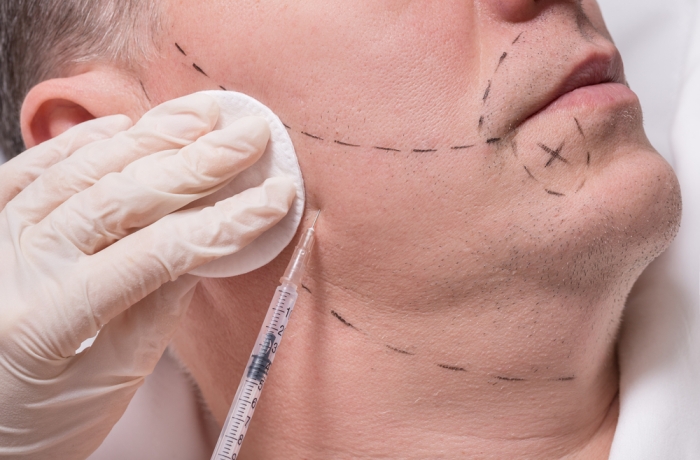Beard transplantation is a cosmetic procedure that involves harvesting hair from the scalp and transplanting it onto the beard area to achieve a fuller and thicker beard. This procedure is becoming increasingly popular among men who want to enhance their appearance and achieve a more masculine look.
Beard transplantation is a cosmetic procedure that has gained popularity in recent years. The procedure involves transplanting hair follicles from the scalp to the beard area to create a fuller and thicker beard. This procedure was first performed in the 1990s, but it has gained more attention in the past decade as more men seek to improve the appearance of their facial hair.

In Turkey, beard transplantation is a widely popular procedure among both locals and international patients. The country is known for its advanced medical facilities, experienced plastic surgeons, and affordable prices, making it a popular destination for those seeking to undergo this procedure.
Beard transplantation can help men achieve their desired facial hair appearance. It can be especially beneficial for those who struggle with patchy or sparse beards or those who have scars or other imperfections in their beard area. This procedure can improve the overall facial appearance and boost self-confidence.
There are few alternatives to beard transplantation for those seeking a permanent solution to thin or patchy facial hair. One option is to use topical treatments, such as minoxidil, which can stimulate hair growth. However, these treatments often require long-term use and may not provide significant results.
Another alternative is to use temporary solutions, such as beard extensions or false beards. However, these options can be time-consuming, expensive, and may not look natural. Therefore, beard transplantation is considered the most effective and permanent solution for those seeking a fuller and thicker beard.
 Summary
Summary In conclusion, beard transplantation is a viable option for individuals looking to enhance their facial hair. The procedure involves transplanting hair follicles from the scalp to the beard area. With modern techniques and advancements, the procedure is safe and effective, and can provide long-lasting results.
If you are interested in beard transplantation, it is important to consult with a qualified and experienced surgeon. Turkey is a popular destination for medical tourism, and offers world-class facilities and experienced surgeons at an affordable price.
To recap, some of the key points to consider before undergoing beard transplantation include understanding the procedure, assessing your candidacy, choosing the right technique, preparing for the procedure, and following post-procedure instructions carefully.
If you are considering beard transplantation, take the time to research and find a reputable clinic in Turkey that can provide the care and attention you need. With proper care and maintenance, a full and healthy beard can be within reach.
Beard transplantation is a cosmetic surgery that has become increasingly popular in recent years. This procedure is suitable for men who are unable to grow a full beard or who have patchy hair growth on their face. It is also useful for those who have lost their facial hair due to injury or burns. Some men opt for a beard transplant simply to enhance their facial hair density and improve their appearance.
The ideal candidate for a beard transplant is someone who is in good health and has realistic expectations for the outcome of the procedure. The patient should have enough donor hair available on the scalp or body to transplant to the beard area. The thickness and density of the hair in the donor area will determine the success of the transplant.
There are two primary methods for performing a beard transplant: Follicular Unit Extraction (FUE) and Follicular Unit Transplantation (FUT). FUE involves harvesting individual hair follicles from the donor area and transplanting them to the beard area. FUT involves removing a strip of skin with hair follicles from the donor area and transplanting it to the beard area.
Before undergoing a beard transplant, the patient should meet certain requirements to ensure the success of the procedure. These requirements include:
In Turkey, many clinics specialize in beard transplantation, offering top-quality services at affordable prices. The following table compares the average cost of beard transplantation in Turkey to other countries:
| Country | Average Cost of Beard Transplantation (in USD) |
| Turkey | $2,000 - $4,000 |
| United States | $7,000 - $15,000 |
| United Kingdom | $6,000 - $12,000 |
| Australia | $5,000 - $10,000 |
| India | $1,500 - $3,000 |
As can be seen from the table, Turkey offers some of the most competitive prices for beard transplantation without compromising on quality.

Before undergoing a beard transplant procedure in Turkey, there are several steps you need to take to prepare for the surgery. These steps will help ensure a safe and successful procedure.
The first step in preparing for a beard transplant procedure in Turkey is to schedule a consultation with a qualified and experienced surgeon. During the consultation, the surgeon will assess your suitability for the procedure and discuss the details of the surgery. You will also have the opportunity to ask any questions you may have and voice any concerns.
Before the procedure, your surgeon will provide you with specific instructions on how to prepare. You may be required to avoid certain activities, such as shaving or using hair removal products, for a certain period before the procedure. You will also be given instructions on what to wear on the day of the surgery, and whether you need to arrange for transportation to and from the clinic.
It is important to inform your surgeon about any medication or supplements you are currently taking. Certain medications and supplements may need to be avoided in the weeks leading up to the procedure, as they can increase the risk of bleeding and other complications. Your surgeon will provide you with specific instructions on which medications and supplements to avoid.
Smoking and alcohol use can have a negative impact on the healing process and increase the risk of complications. It is recommended that you stop smoking and limit alcohol consumption in the weeks leading up to the procedure. Your surgeon may also advise you to refrain from smoking and alcohol use during the recovery period.
By following these instructions and preparing properly, you can help ensure a successful and safe beard transplant procedure in Turkey.
Beard transplantation is a surgical procedure that involves harvesting hair follicles from one area of the body and transplanting them into the beard area. There are two main techniques used for beard transplantation: Follicular Unit Extraction (FUE) and Direct Hair Implantation (DHI). Both techniques involve the use of local anesthesia to numb the donor and recipient areas before the procedure.
The duration of the beard transplantation procedure depends on the number of hair follicles required for the transplant. Generally, a beard transplantation procedure can take anywhere from 2 to 6 hours. However, it is important to note that the procedure can be performed in multiple sessions depending on the size of the beard area and the number of hair follicles required.
In Turkey, beard transplantation is performed by experienced and qualified surgeons at state-of-the-art clinics equipped with the latest technologies. The cost of the procedure in Turkey is relatively affordable compared to other countries, making it a popular destination for people seeking beard transplantation. In the next section, we will discuss the preparation required before undergoing a beard transplantation procedure.
Beard transplantation is considered a safe and effective procedure. However, like any surgical procedure, it does carry some risks and potential complications. It is important for candidates to be aware of these risks and discuss them with their surgeon prior to the procedure.
General Risks
The general risks associated with any surgical procedure include:
Specific Risks and Complications
Specific risks and complications associated with beard transplantation include:
The clinic takes several precautions to prevent risks and complications. The surgeon and staff follow strict sterile techniques during the procedure to minimize the risk of infection. The clinic also ensures that the candidate's medical history is thoroughly reviewed to identify any potential issues that could increase the risk of complications. The surgeon will also discuss the potential risks and complications with the candidate before the procedure to ensure they are fully informed and prepared. After the procedure, the clinic will provide detailed post-operative instructions to minimize the risk of complications and promote optimal healing.
In Turkey, clinics and hospitals that perform beard transplantation procedures adhere to strict safety and quality standards set forth by the Turkish Ministry of Health. These standards ensure that the clinic provides a safe and sterile environment for the procedure and that the staff is properly trained and qualified to perform the procedure. Turkey is a popular destination for medical tourism due to its high-quality healthcare services, affordable prices, and experienced medical professionals.
After the beard transplantation procedure, it is crucial to follow the post-procedure instructions given by the surgeon to ensure a smooth and quick recovery. The following are some of the post-procedure instructions that should be followed:
Post-Procedure Instructions:
Follow-Up Appointments:
Patients will need to attend follow-up appointments with the surgeon to monitor the progress of the transplanted hair and ensure that the recovery process is going smoothly. The first follow-up appointment usually takes place a week after the procedure, followed by a second appointment around three months later.
In Turkey, medical facilities offering beard transplantation procedures follow international guidelines and take all necessary precautions to ensure that the risks and complications associated with the procedure are minimized. Patients who follow the post-procedure instructions given by their surgeon can expect to have a smooth and quick recovery.

Sonuç olarak, sakal ekimi sakallarını uzatmak isteyen kişiler için uygun bir seçenektir. Prosedür, saç köklerinin kafa derisinden sakal bölgesine nakledilmesini içerir. Modern teknikler ve ilerlemelerle, prosedür güvenli ve etkilidir ve uzun süreli sonuçlar sağlayabilir.
Özetlemek gerekirse, sakal ekimi yaptırmadan önce göz önünde bulundurulması gereken kilit noktalardan bazıları, prosedürü anlamak, adaylığınızı değerlendirmek, doğru tekniği seçmek, prosedür için hazırlanmak ve prosedür sonrası talimatları dikkatlice takip etmektir.
Sakal ekimi düşünüyorsanız, araştırmak için zaman ayırın ve ihtiyacınız olan bakım ve ilgiyi sağlayabilecek saygın bir klinik bulun. Uygun bakım ve bakım ile dolgun ve sağlıklı bir sakal ulaşılabilir olabilir.
>